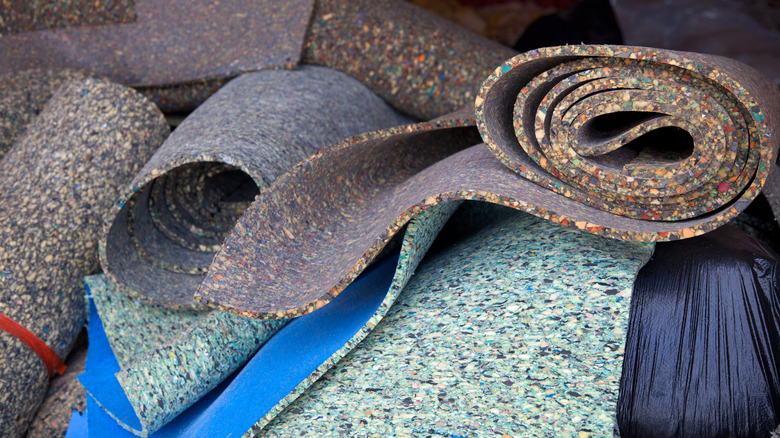Why An Underlay Is A Necessity When Buying New Carpet
The time has come for you to install new carpet in your home. While you are excited about the prospect of new flooring that looks and feels fresh and is free from debris, you are not loving the idea of shelling out so much money. You can safely expect to spend $1 to $4 per square foot for carpet, but there's also the installation of underlay to factor in. Underlay, or padding, is the spongy material installed underneath the carpet itself. It can cost $0.60 or more per square foot, which adds up when you're carpeting a large space. Though underlay may not immediately jump out to you as a necessary expense, failing to install it can spell problems in the future.
You may wonder if you can trim the expense of underlay, but choosing to cut this corner is not recommended. Underlay is responsible for making the flooring more comfortable (without it, the very thin carpeting that you have installed will provide only a soft top and will be unpleasant to walk, sit, or play on). In addition to providing that extra layer of comfort for day-to-day life, underlay plays a vital role in improving the wear and performance of your carpet, making it look new over the years: It serves as a barrier between the hard flooring underneath and the carpet itself. If you choose to opt out of underlay, you do so at your own peril, as the lack of underlay can wear out the carpet much faster.
How to choose the right underlay for your carpet
If you're sold on underlay (as you should be), there is much to consider as you decide what material you'll have installed. Yes, underlay comes in a variety of materials, and each has its own pros and cons list. If you include labor costs, the most affordable material, rebonded foam, will cost you $0.75 to $1.55 per square foot, while flat rubber, the priciest padding, will cost $1.25 to $3.75 per square foot.
The rebonded foam option might not be ideal for high-traffic spaces, as it is less durable than the more expensive options; it will be on the shorter lifespan of underlays and may last only 8 years. Flat rubber, on the other hand, is incredibly durable and is likely to last as long as 20 years (it's also a great choice for high-traffic spaces in the home). Between rebonded foam and flat rubber padding are numerous moderate options, depending on your needs and budget.
As a general rule of thumb, underlay should be replaced every time you put down new carpet, with the exception being if the current underlay is less than a year old (such as if you purchased a home with new carpet and underlay but are switching out the carpeting for aesthetic reasons). While underlay is an added expense to your recarpeting project, it is a worthwhile way to spend your money.

